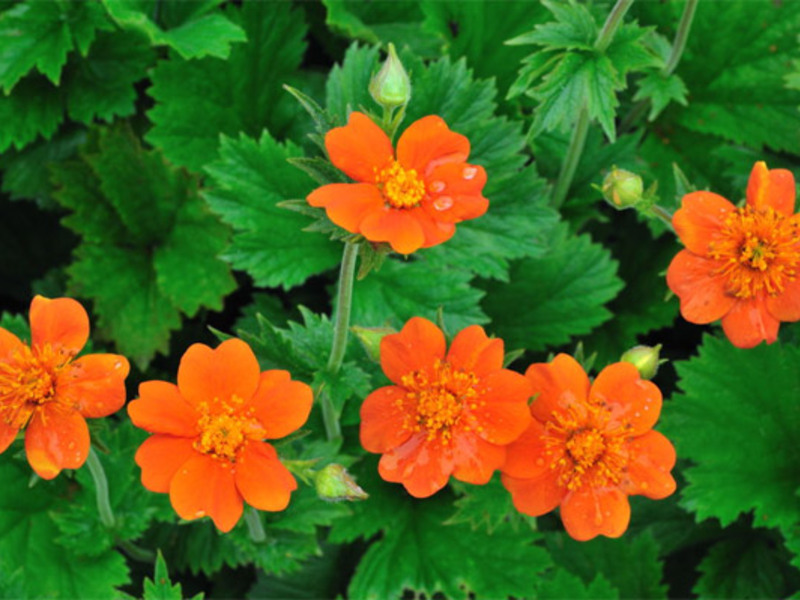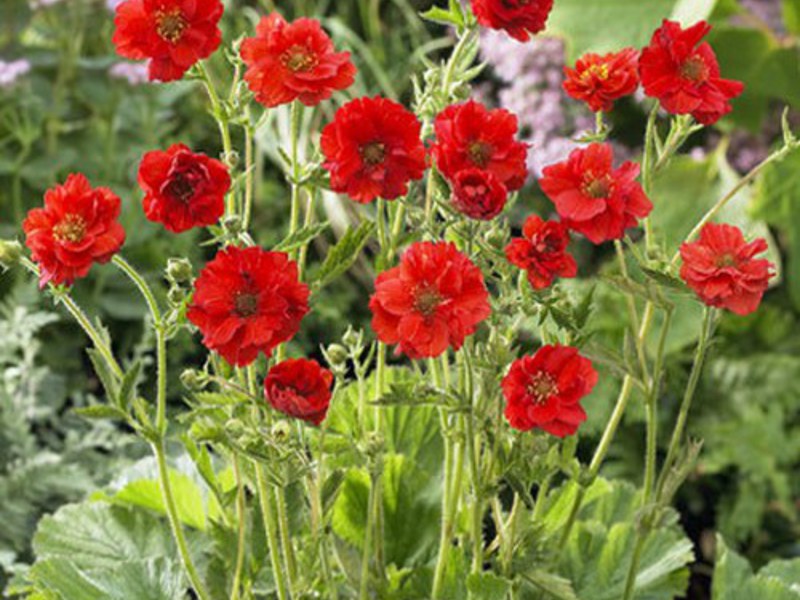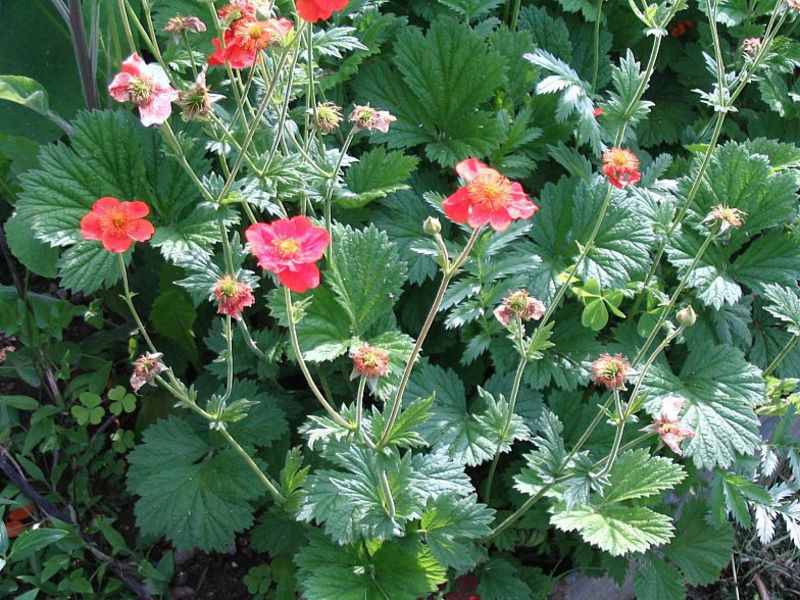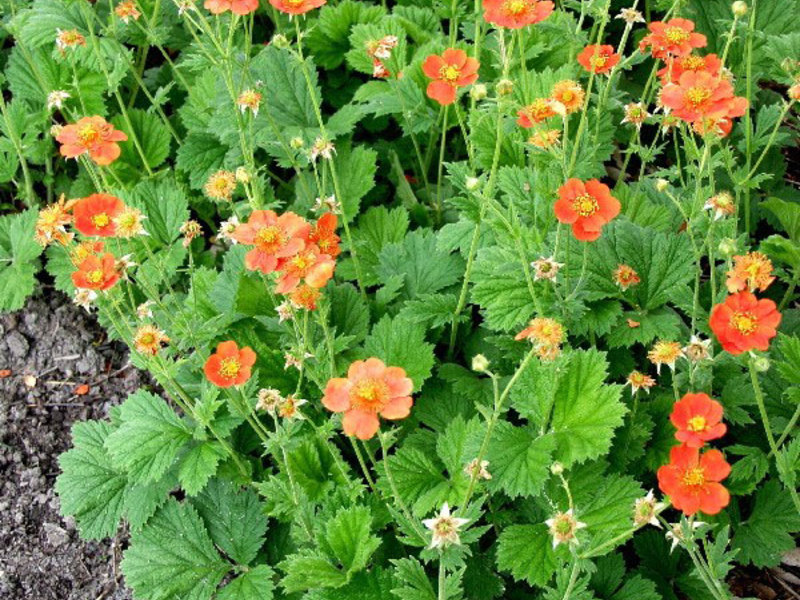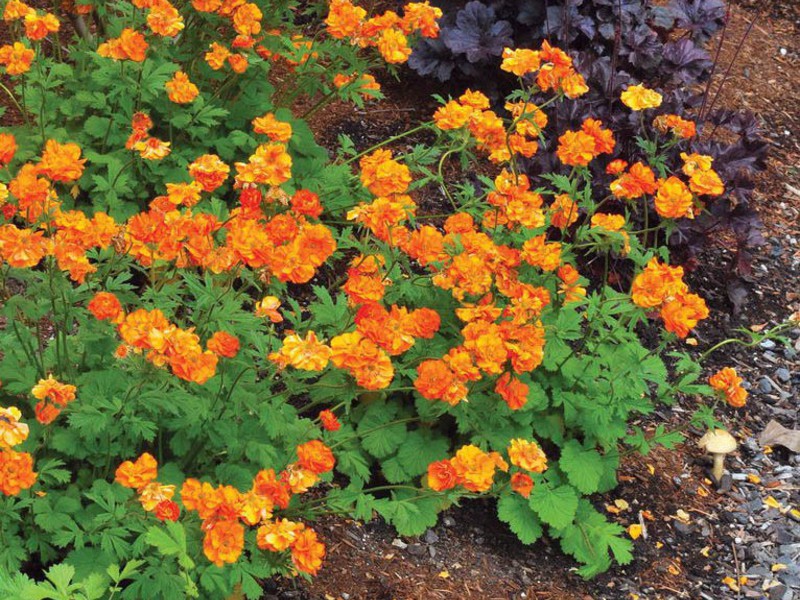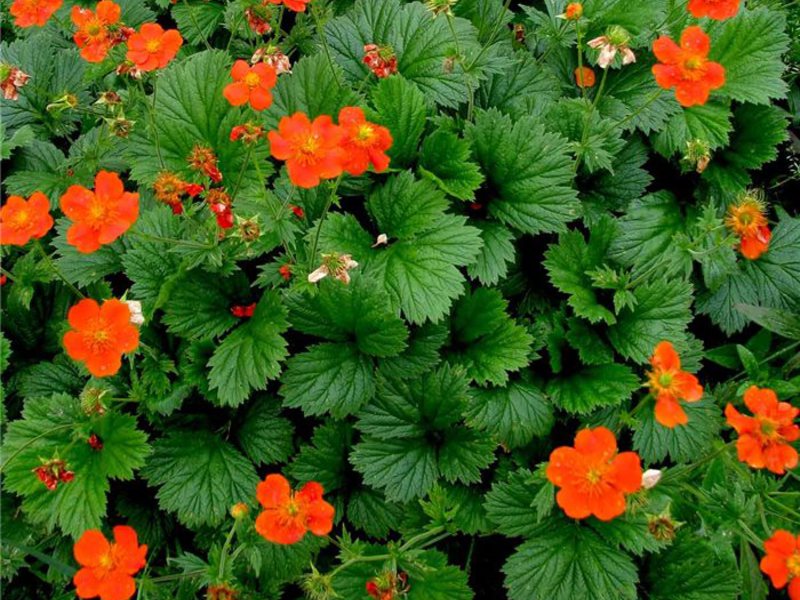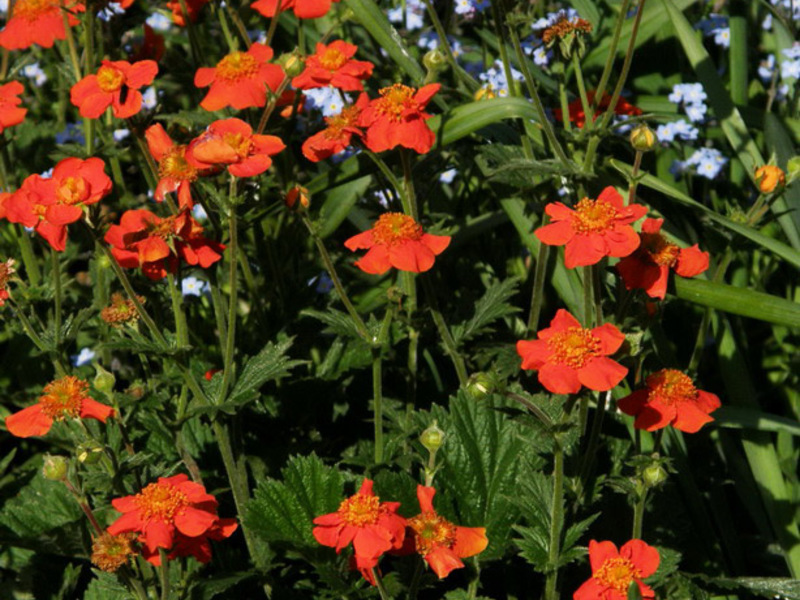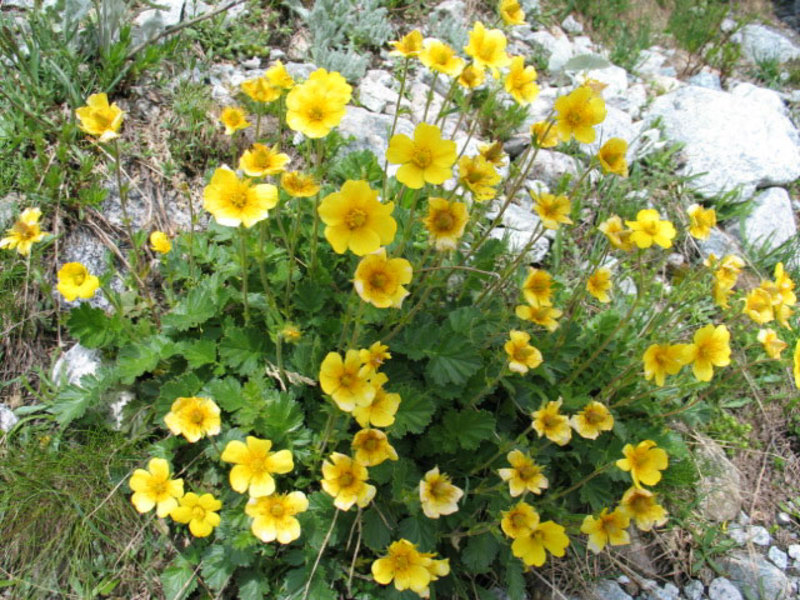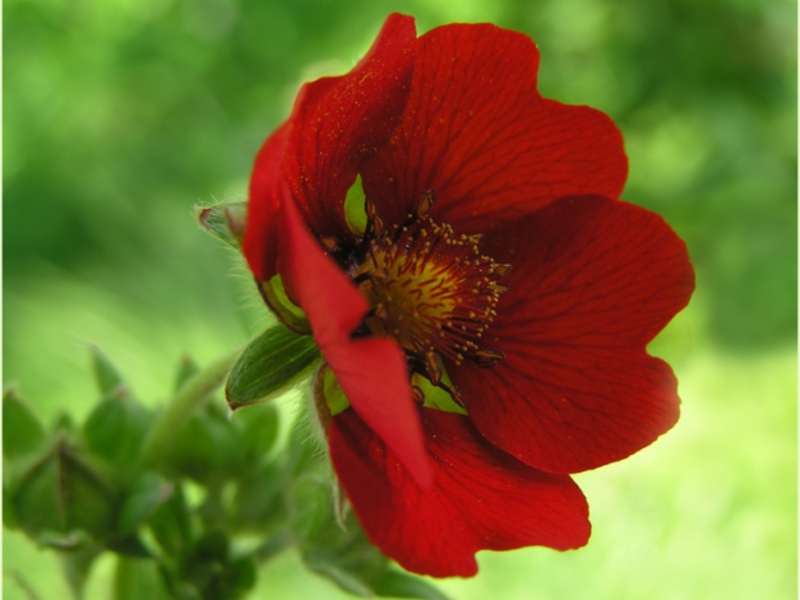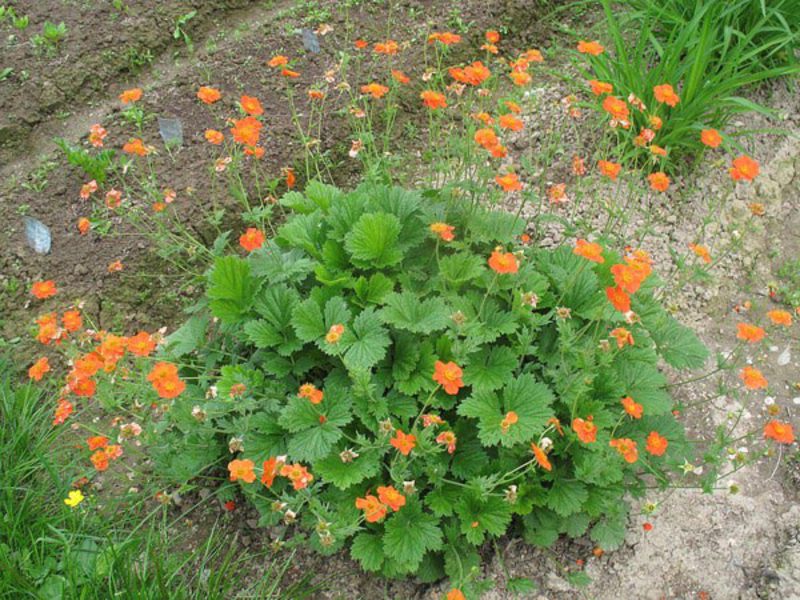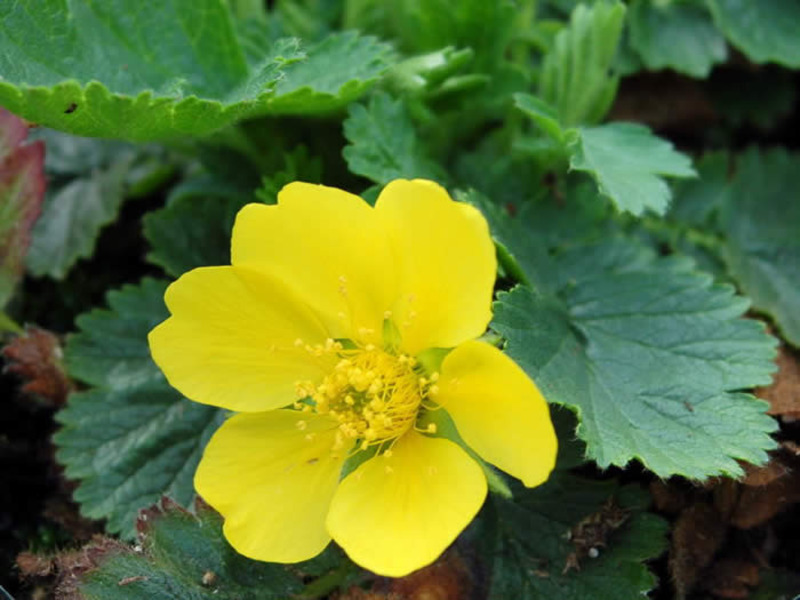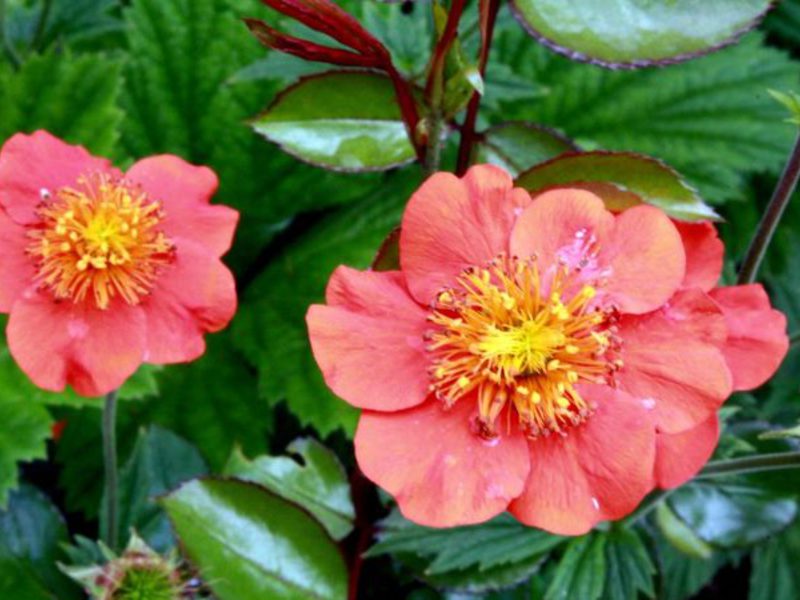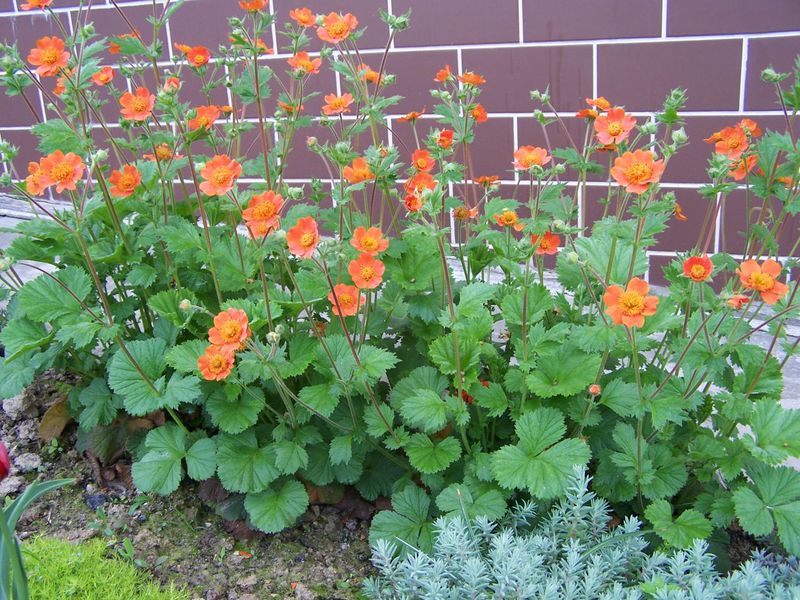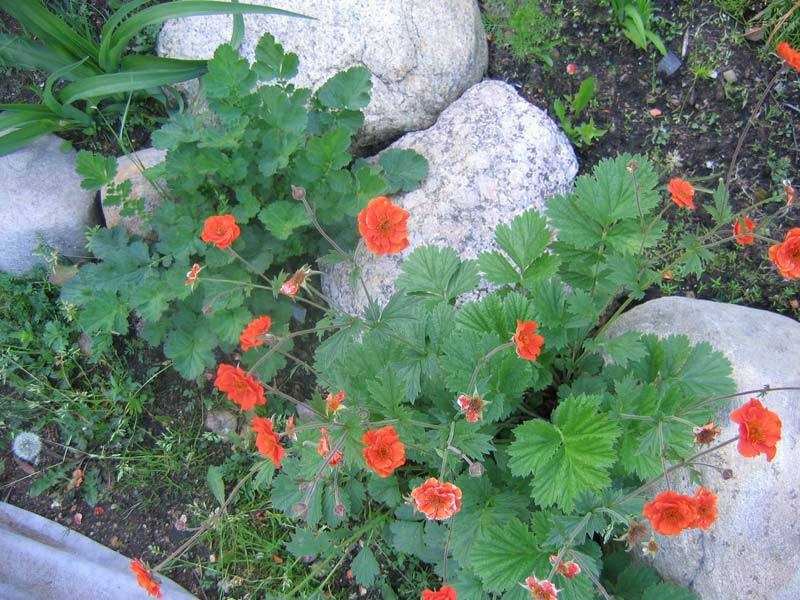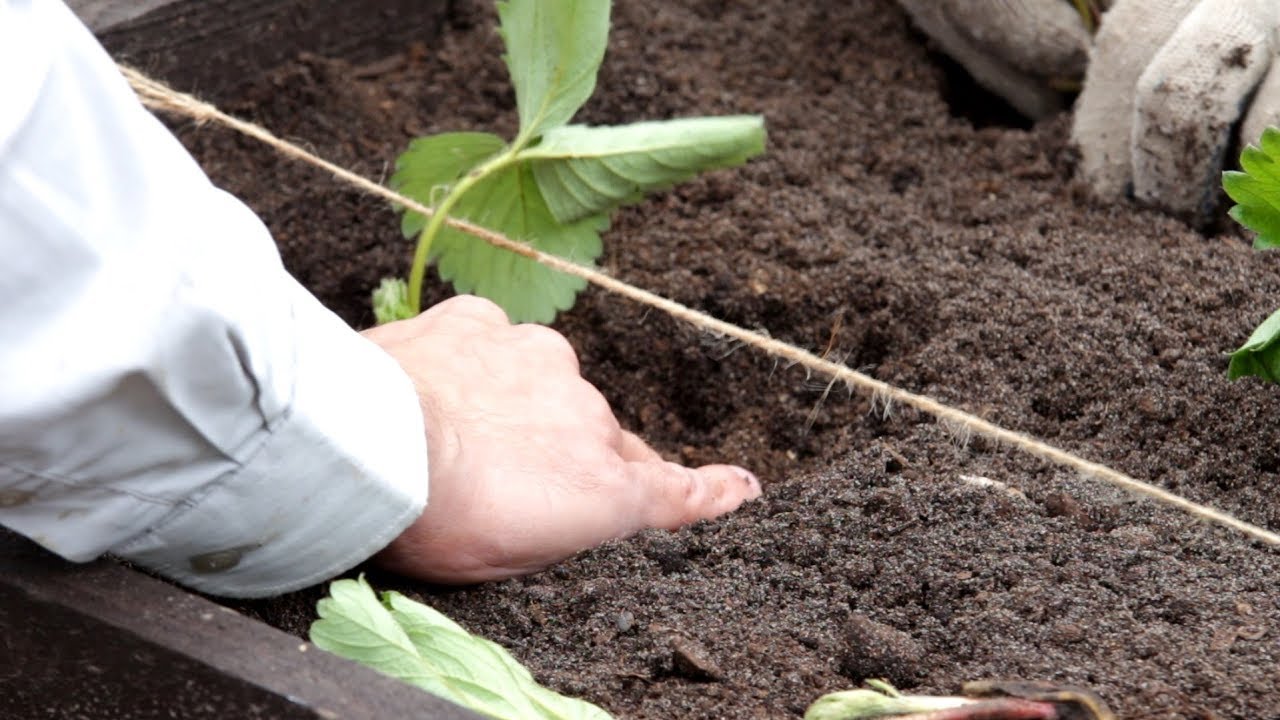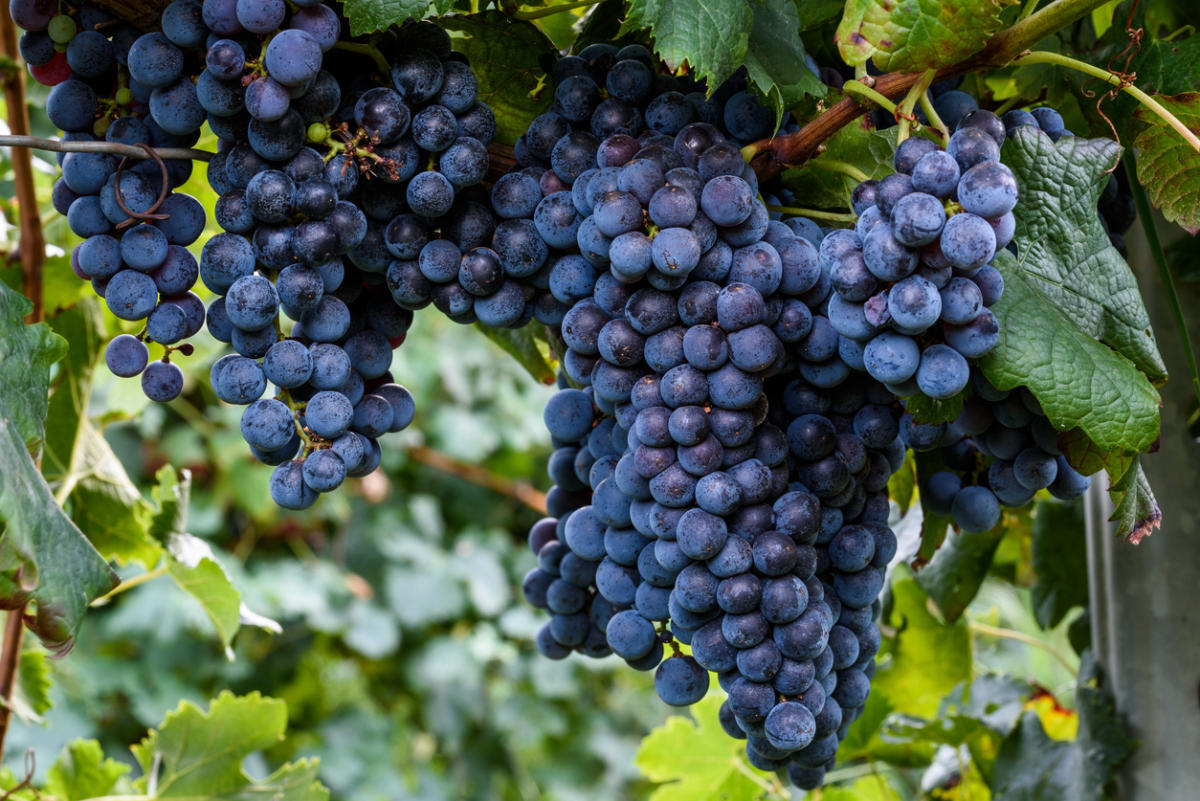Gravilat (Geum) is a plant from the Rosaceae family. These are perennial shrubs with a dense basal rosette with large pinnate leaves. It can remain green all year round if the temperature in the region does not drop below -18 ° C. The genus has about 50 species in total, but only 20 of them are used in culture. There are especially decorative varieties that can be seen in the photo.
Content
Landing subtleties
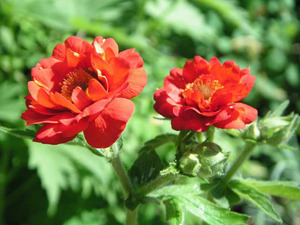 One of these popular types is Chilean gravilat, cultivation from the seeds of which will not be difficult. After all, the plant is quite unpretentious. The best time to plant it is spring, after the soil thaws, but before bud break.
One of these popular types is Chilean gravilat, cultivation from the seeds of which will not be difficult. After all, the plant is quite unpretentious. The best time to plant it is spring, after the soil thaws, but before bud break.
When choosing a place, it must be borne in mind that almost all varieties very poorly tolerate stagnant moisture in the soil. From this, they can develop rot. It is worth avoiding areas where their root system will be located near groundwater. Alternatively, they can be placed in tall flower beds, or the soil can be raised by simply adding more sand to it.
Despite the unpretentiousness for growing gravilat, it is necessary to provide light, loose and permeable soil... Before planting, it must be prepared, dug up, removing all weeds and making:
- Sand;
- Compost or humus;
- Wood ash;
- Lime;
- Dolomite flour.
This will help normalize the acidity and provide a good drainage layer. It will also be useful to treat the soil with a solution of fungicides for preventive purposes. This is especially important for growing hybrid varieties. They are most susceptible to fungal infections.
With regard to lighting, here it is optimal to choose an area with diffused light. Although gravilat grows in the open sun and in partial shade. This aspect is important for flowering. In shaded areas, it is not so lush, but it is long lasting.
The exception is river gravity... He loves wet and swampy areas, prefers shade. He will be comfortable on the banks of reservoirs, he tolerates lime or acidic soil well.
We care properly
 For normal development, the plant needs competent care. Although, due to unpretentiousness, it is not difficult to provide it. The usual procedures for gravilat are:
For normal development, the plant needs competent care. Although, due to unpretentiousness, it is not difficult to provide it. The usual procedures for gravilat are:
- Weed removal;
- Loosening of the soil for aeration of the roots;
- Pruning dry peduncles;
- Top dressing and watering.
Removal of peduncles can be carried out after the first flowering, this will extend its period. In addition, with good care, gravilat can bloom again closer to autumn. And its types such as river or city bloom in May and delight with their flowers until October. Shoot pruning is carried out for anti-aging purposes.
With regard to cold resistance, it depends on the species. Gravilat rossa, river and triflorum are not afraid of frost. But winter insulation is needed for young specimens and hybrid varieties, especially terry varieties. Therefore, in the fall, the above-ground part of them must be cut off, and the roots should be insulated with spruce branches, leaves, straw, or mulched so that they do not freeze.
Gravilat does not tolerate transplantation very well; after the procedure, the bush does not take root well and may not even bloom.So it is advisable to carry it out no more than once every 3-4 years, however, within these limits, it contributes to rejuvenation. It is best to combine it with division. It is carried out in early autumn in warm regions so that the plant has time to adapt before the onset of cold weather. The autumn procedure should be started when all the seeds on the gravilate are ripe.
In the middle lane, the bush is divided in the spring. It is dug up and neatly divided into parts. It is important that they have a rosette of leaves, buds and roots. Wells for them are prepared in advance by spilling them with water. After planting, compost or peat is added to the ground and moistened well.
A transplant may also be needed if the plant has developed root rot... All affected parts are removed, and healthy ones are simply transplanted to a new place, having previously treated them and the soil with special preparations.
Cuttings are also used for vegetative propagation. They take root well in nutritious soil with regular watering. And they do not require any special measures for rooting.
Gravilat is practically not affected by pests and does not need special treatment with insecticides. Fungal infections are treated with fungicidal drugs.
Fertilizers and watering
 Potassium phosphate mineral compositions are suitable for Gravilat. When growing a Chilean species, it is better to use granular fertilizer with potassium, nitrogen and phosphorus... This is especially true during flowering. It is enough to add it 2 times a season. Humus is useful from organic matter.
Potassium phosphate mineral compositions are suitable for Gravilat. When growing a Chilean species, it is better to use granular fertilizer with potassium, nitrogen and phosphorus... This is especially true during flowering. It is enough to add it 2 times a season. Humus is useful from organic matter.
Watering the plant needs abundant and regular watering, but without waterlogging. Better to focus on the condition of the soil. It should not be dry or excessively damp. Particular attention is paid to water treatments during dry and hot periods. At this time, watering is useful at the root.
Due to prolonged drought, the aboveground part of the gravilat can dry out. But even in this case, the situation should not be considered hopeless. Most likely, abundant hydration will correct the situation.
We grow seedlings
This breeding option is also good because such plants can bloom for a long time. Seed stratification within even a few days at a temperature of + 5-10 ° C accelerate their germination. But a simple soaking in water for 5 days will give the same effect.
In March-April, seeds are sown in special containers, lightly sprinkled with soil, sand, and covered with thermal film or glass. They need to provide illumination, prevent the substrate from drying out, regularly moisturizing it. They germinate in about 2 weeks. When seedlings appear, the shelter must be removed every day to ventilate and harden the seedlings.
When the first pair of leaves appears, the seedlings dive into separate containers. You can plant seedlings in open ground in early June. Some do this in April, but at this time there is a high probability of frost, so you need to take care of covering the young bushes with film or special material. When planting, maintain a distance of 15-20 cm between them. Gravilat, grown from seed, usually blooms at 2 years.
Seeds can also be sown in open ground in spring, and if the climate is mild, then in autumn. Do not forget about planting shelter and tillage antifungal drugs, as well as when planting seedlings. In summer, the grown bushes are moved to the flower bed.
Variety of species
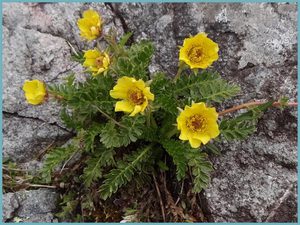 In the culture of gravilat with. XIX in. Many varieties are used for ornamental gardening, here are just a few of them.
In the culture of gravilat with. XIX in. Many varieties are used for ornamental gardening, here are just a few of them.
Bright red reaches 1.5 m in height. It blooms from late May to mid-July. There is a Borizin variety, the flowering time of which is June-September.
Chilean belongs to tall species, it is often called the Greek rose. Its bright green leaves are collected in a rosette. Scarlet flowers bloom at the end of June and continue flowering for about 2 weeks... This variety is used in the manufacture of medicines or spices.The Mapuche Indians still use it in their traditional medicine for toothache and stomach ailments.
The hybrid group is the plants obtained by crossing the Chilean and bright red gravilata. One of the very popular varieties can be called "Fireball". It reaches a height of 60 cm. As you can see in the photo, it has large spherical flowers of a bright orange color, its leaves remain green for a long time. It has a long flowering time of 45 to 60 days.
River gravilat is a variety with a thick rhizome, it reproduces only by seeds. There are garden forms with white, yellow, pink flowers. In particularly humid places, the foliage takes on a purple hue. Interestingly, when the flower ripens, the stamens provide the plant with fertilization. Its root rosette goes through several stages of formation.
Mountain view low plant about 15 cm with yellow inflorescences... It blooms quite early in May and continues to bloom for about 2 months. City gravilat or St. Benedict's grass. Up to 60 cm in height. A species with a long flowering period and bright yellow inflorescences.
There is a place for Gravilat in almost any garden. It has been known since ancient times, its old name is overpower-grass. It was believed that the plant protects against misfortune and disease. Caring for it is simple, and growing with your own hands will delight any gardener. It is planted in rockeries and ridges. For rock gardens it is better to take a mountain view, it is more unpretentious, it is also used as a ground cover plant. And the Chilean gravilat or Fireball is great for curbs.
